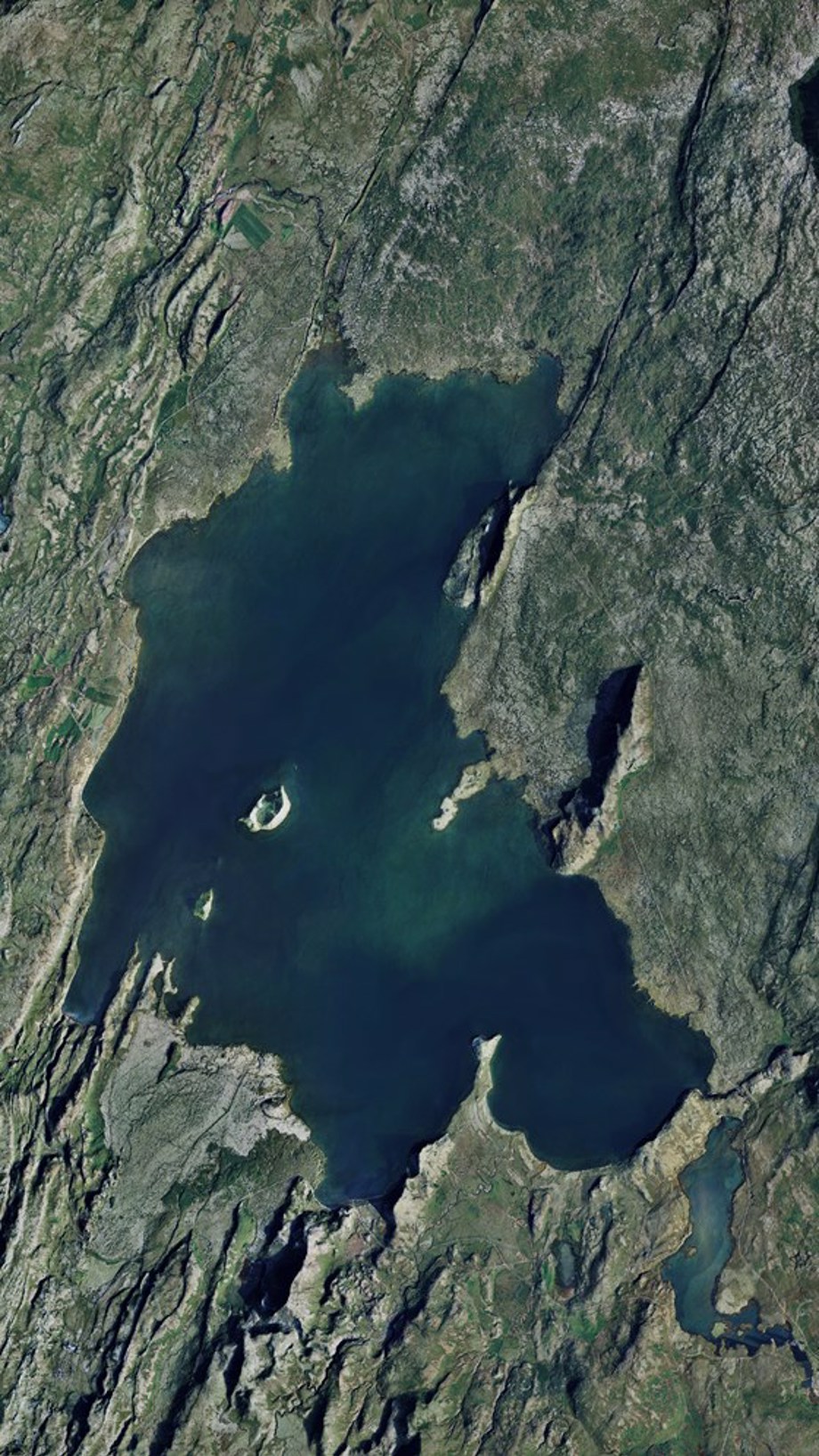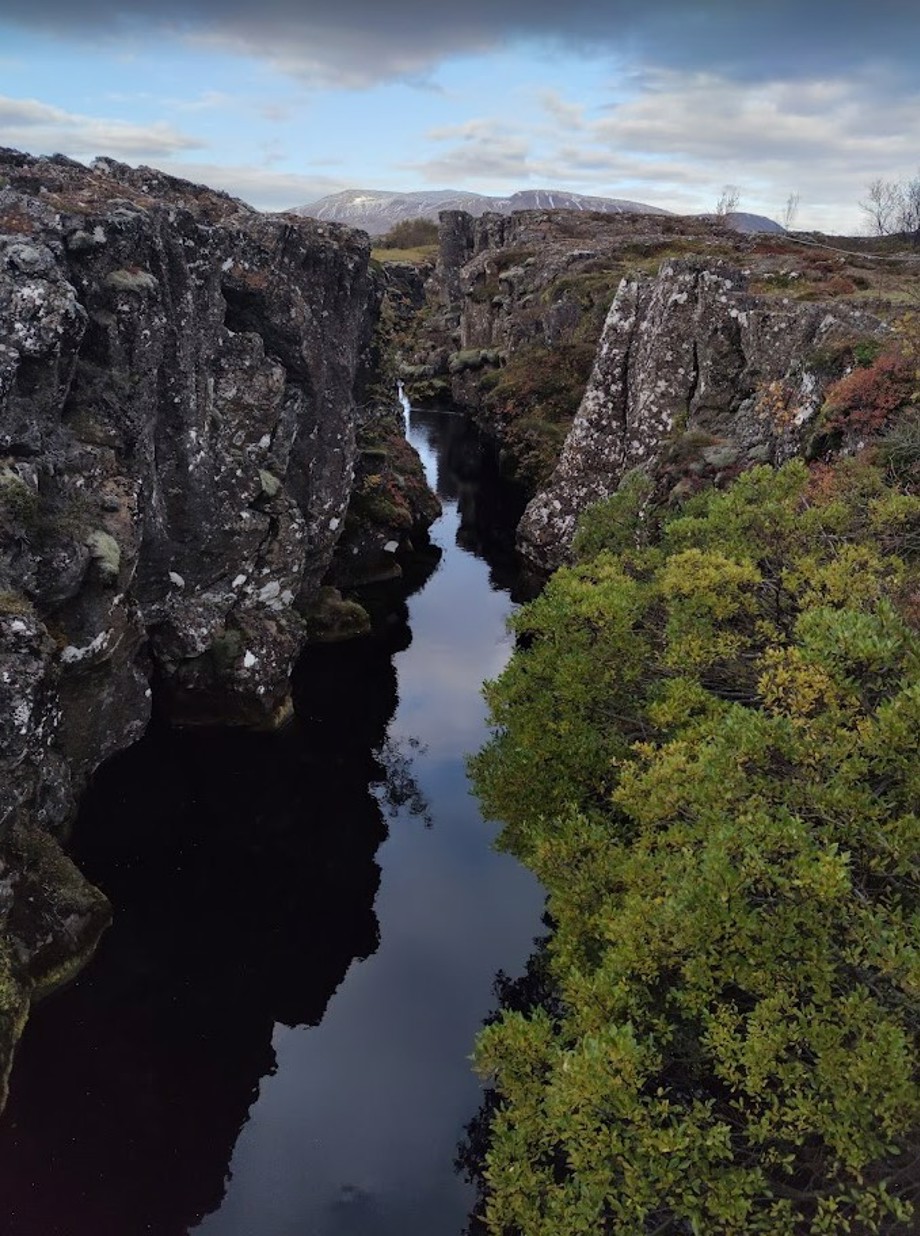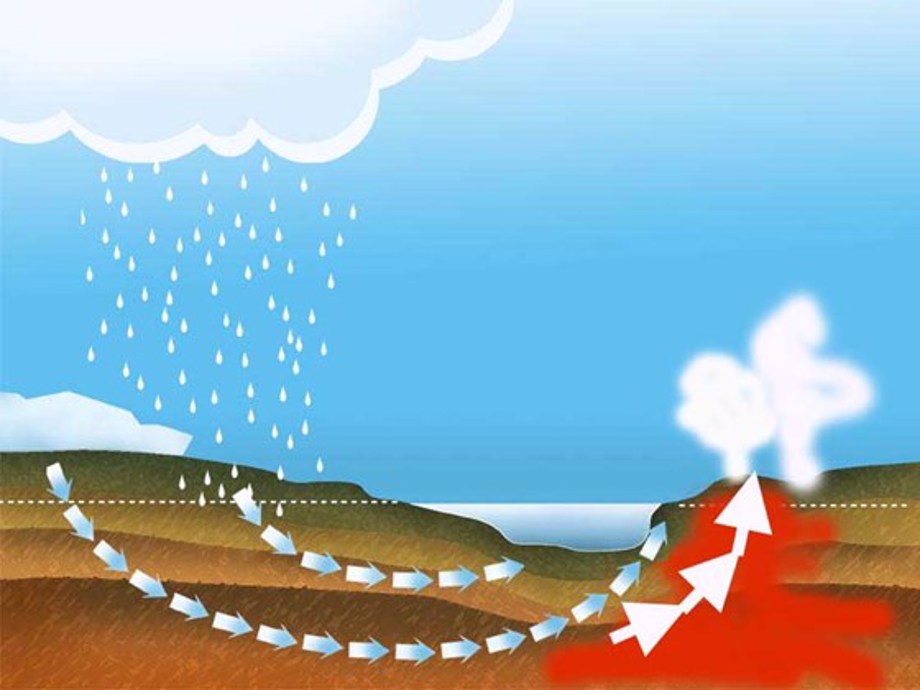Lake Þingvallavatn lies in a rift valley that extends south from the Langjökull glacier to mount Hengill, and from Botnssúlur in the west to Lyngdalsheiði in the east.
Lake Þingvallavatn is the largest natural lake in Iceland, about 84 square kilometres, at an altitude of about 100 metres above sea level. The deepest part of the lake measures 114 metres, which means that it reaches below sea level.

Lake Þingvallavatn, seen here on picture is 82 square kilometers at Size. It´s catchment area is though way bigger or 1300 square kilometers.
Þingvellir þjóðgarður / Gagarín
The catchment area of Þingvallavatn, about 1300 square kilometres, lies in the same direction as the fissures in the area, and its existence is closely connected with the geological history. There is a great deal of precipitation in the catchment area.
About 9/10 of the water influx in Þingvallavatn runs along underground channels to the lake. It takes 20-30 years for water to run south into Þingvallavatn from the glacier Langjökull, and it's said that, on its way, it passes through the earth's mantle at a depth of eight kilometres.

Movement of tectonic plates effects the area, forming rifts and ravines in the landscape. Here we can see water that is taking it´s final flow in direction to lake Þingvallavatn after it´s travel from Langjökul, 50 km to the north.
Þingvellir National Park / Gagarín
The rain that falls on the lava takes 2-4 months to enter the lake. South of Þingvellir is Nesjavellir, the largest high-temperature area in the country. There, water heats up underground by contact with hot rock, and is forced up through the crevices and faults under mount Hengill.
Reykjavík Energy has harnessed the high-temperature area to heat cold water for household heating with low-pressure steam and drillhole water, but it also generates electricity with high-pressure steam.

Part of the water from Langjökull comes out as a cold water in the norhtern part of lake Þingvallavatn. Meanwhile other parts of the water goes further down and comes up at the lakes south end, Nesjavellir, as a steaming hot water.
Þingvellir National Park